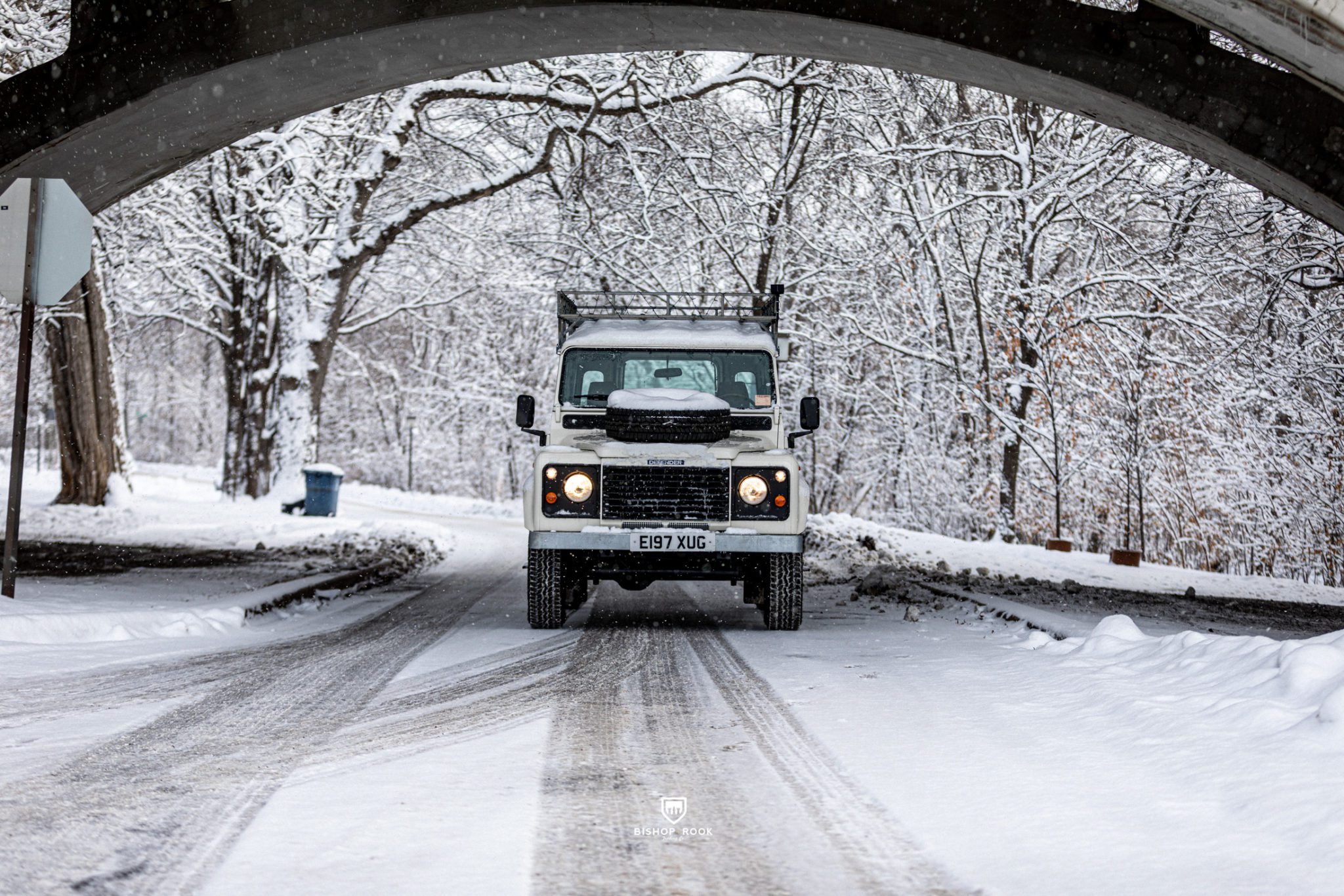The Land Rover Defender is an extremely durable and reliable vehicle, but even the toughest vehicles can suffer from neglect, particularly when exposed to wet climates.
Many Defenders, especially from the United Kingdom, were often neglected over the years. A lack of service, combined with moisture and wet environments, led to many owners opting to replace/swap their chassis rather than patch and repair it. The unfortunate consequence of this action is that it is no longer eligible to be imported to the United States.
Attempting to import a Land Rover Defender with a chassis swap can be complex, legally challenging, and expensive. Do not attempt it. No matter how much you may want a particular vehicle, a Defender with a new chassis will never be allowed through customs.
Why People Swap Defender Chassis:
The chassis is the backbone of any vehicle, providing structural support and acting as the foundation for the entire vehicle. In the case of the Land Rover Defender, the chassis plays an even more critical role due to its off-road nature and the demands placed on it during challenging terrains and weather conditions. Neglecting the chassis can have far-reaching consequences, impacting both the vehicle’s performance and safety.
Neglect and Its Consequences:
- Corrosion and Rust: One of the most common issues the Land Rover Defender chassis faces is corrosion and rust. When exposed to moisture, especially in wet climates, unprotected or poorly maintained chassis can succumb to rust. This can compromise the structural integrity of the vehicle and result in costly repairs or, in extreme cases, render the chassis irreparable.
- Weakening of Structural Components: The accumulation of dirt, mud, and moisture on the chassis can weaken structural components over time. This can adversely affect the vehicle’s handling, stability, and overall safety. Neglected chassis may experience fatigue, cracks, or even failure, making it imperative to address any signs of damage promptly.
- Electrical and Mechanical Complications: Moisture can seep into vulnerable chassis areas, affecting electrical and mechanical components. Wiring harnesses, connectors, and sensitive electronics can deteriorate, leading to electrical malfunctions and even system failures. Conducting regular inspections and taking preventive measures to safeguard these critical components is crucial.
Swapping out an old, rusty, and patched Land Rover Defender chassis for a new galvanized one offers numerous advantages. The enhanced corrosion resistance, improved structural integrity, ease of maintenance, and preservation of vehicle value are compelling reasons for owners to undertake this upgrade.
The unfortunate part is that once the chassis has been replaced, it no longer has the critical factory-stamped VIN tag – which is required for import to the US (and many other countries).
The Significance of VIN Matching:
When it comes to importing vehicles into the United States, adherence to federal regulations is crucial. One of the key requirements is the matching of the VIN on the chassis with the accompanying paperwork. The VIN serves as a unique identifier for each vehicle, enabling authorities to verify its authenticity and history. Failing to match the VIN correctly can lead to legal complications, including vehicle seizure and destruction.
Legal Framework and the Department of Homeland Security:
The Department of Homeland Security (DHS) plays a vital role in enforcing import regulations and ensuring compliance. Under the auspices of Customs and Border Protection (CBP), the DHS has the authority to seize non-conforming vehicles. According to current regulations, the DHS has a window of up to five years to identify and seize vehicles that do not comply with federal standards.
Importing Challenges:
Importing a Land Rover Defender with a chassis swap presents several challenges, mainly due to the discrepancies between the original vehicle specifications and the modifications made during the swap. While modifications can enhance the vehicle’s performance and utility, they can also complicate the import process.
- Certification and Compliance: Importing a modified vehicle requires certification and compliance with U.S. standards. The modified Land Rover Defender must either be declared exempt from EPA and DOT standards, or undergo rigorous testing and inspections to ensure that it meets safety, emissions, and other regulatory requirements. Achieving compliance can be a time-consuming and expensive process.
- Documentation and Paperwork: Accurate documentation is vital when importing any vehicle. The paperwork should reflect the changes made to the vehicle, but most importantly, it must match the factory-stamped VIN. It is crucial to work closely with customs brokers, import specialists, or legal professionals who have experience in dealing with vehicle imports to ensure your Defender is eligible to enter the United States. If something is in a bit of a grey area, walk away from it. You will not get lucky.
- Customs and Border Protection Process: When importing a vehicle, it must go through U.S. Customs and Border Protection (CBP) inspection. CBP officers have the authority to examine vehicles and their documentation thoroughly. If a modified Land Rover Defender is caught during inspection and found to be non-compliant or fraudulent, it may be seized and subsequently destroyed.
Potential Consequences:
Attempting to import a Land Rover Defender with a chassis swap without following proper procedures can lead to serious consequences. If the vehicle is identified as non-conforming during the import process or within the five-year window, the DHS has the authority to seize and destroy the vehicle. Therefore, it is crucial to fully understand the legal implications and potential risks before undertaking such an import.
Alternative Options:
Instead of importing a modified vehicle (with a new galvanized chassis), enthusiasts may explore other options to enjoy the Land Rover Defender experience within the boundaries of the law.
- Purchase an Approved Import: Consider purchasing a Land Rover Defender that has already been legally imported and certified for use in the United States. This ensures compliance with federal regulations and eliminates the risk of vehicle seizure.
- Restoring and Modifying an Existing Vehicle: If you desire a modified Land Rover Defender, you can start with a legally imported or existing vehicle and work with reputable and knowledgeable professionals to restore and modify it within legal boundaries. This means that once you’ve imported the vehicle, you can swap for a galvanized chassis after it has been certified by DHS and Customs.











